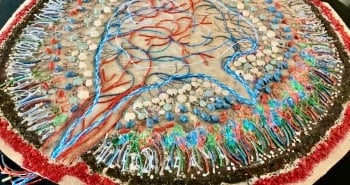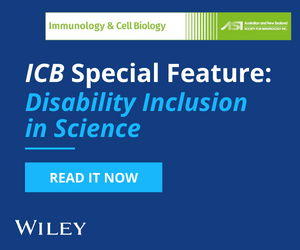Journal list menu
Export Citations
Download PDFs
Editorial
Making science accessible for blind and low-vision people, and those with diverse needs
- First Published: 09 May 2024
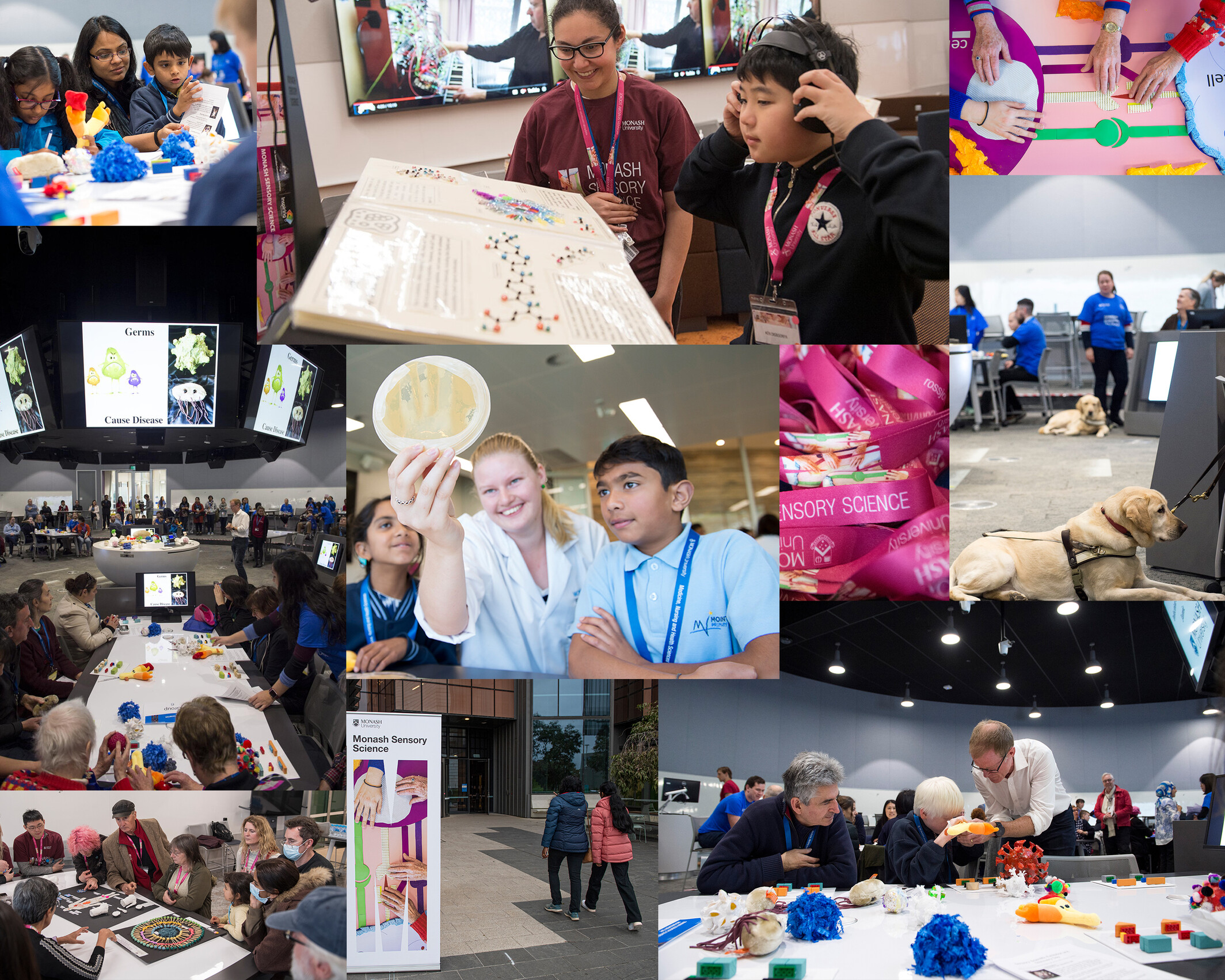
The May–June 2024 issue of Immunology & Cell Biology contains an Immunology Futures Special Feature on Disability Inclusion in Science. Diverse groups do better in science, yet individuals with disabilities face barriers to accessing education and opportunities within scientific disciplines. The Monash Sensory Science program, led by Professor Jamie Rossjohn and legally blind artist in residence Dr Erica Tandori, has transformed the accessibility for those with blindness, low vision and diverse needs (BLVDN) to experience biomedical data visualization through the form of multisensory scientific communication. The Monash Sensory Science Exhibition, first hosted in 2018 with the support of Monash University and the Australian Research Council, utilizes tactile multisensory and multimodal artworks, interactive displays and multisensory science books for BLVDN participants. In this Special Feature, scientists and researchers involved in the 2023 Autoimmunity Monash Sensory Science Exhibition discuss the novel models and displays designed to improve the scientific understanding of complex autoimmune diseases including rheumatoid arthritis, lupus, celiac disease, psoriasis and type 1 diabetes. This Special Feature aims to inform the inclusive teaching of immunology and raise discussions of how to improve access to all within our scientific institutions.
Commentaries
Breaking down barriers with sensory science—improving accessibility to neuroimmunology for the blind and low-vision communities
- First Published: 08 April 2025
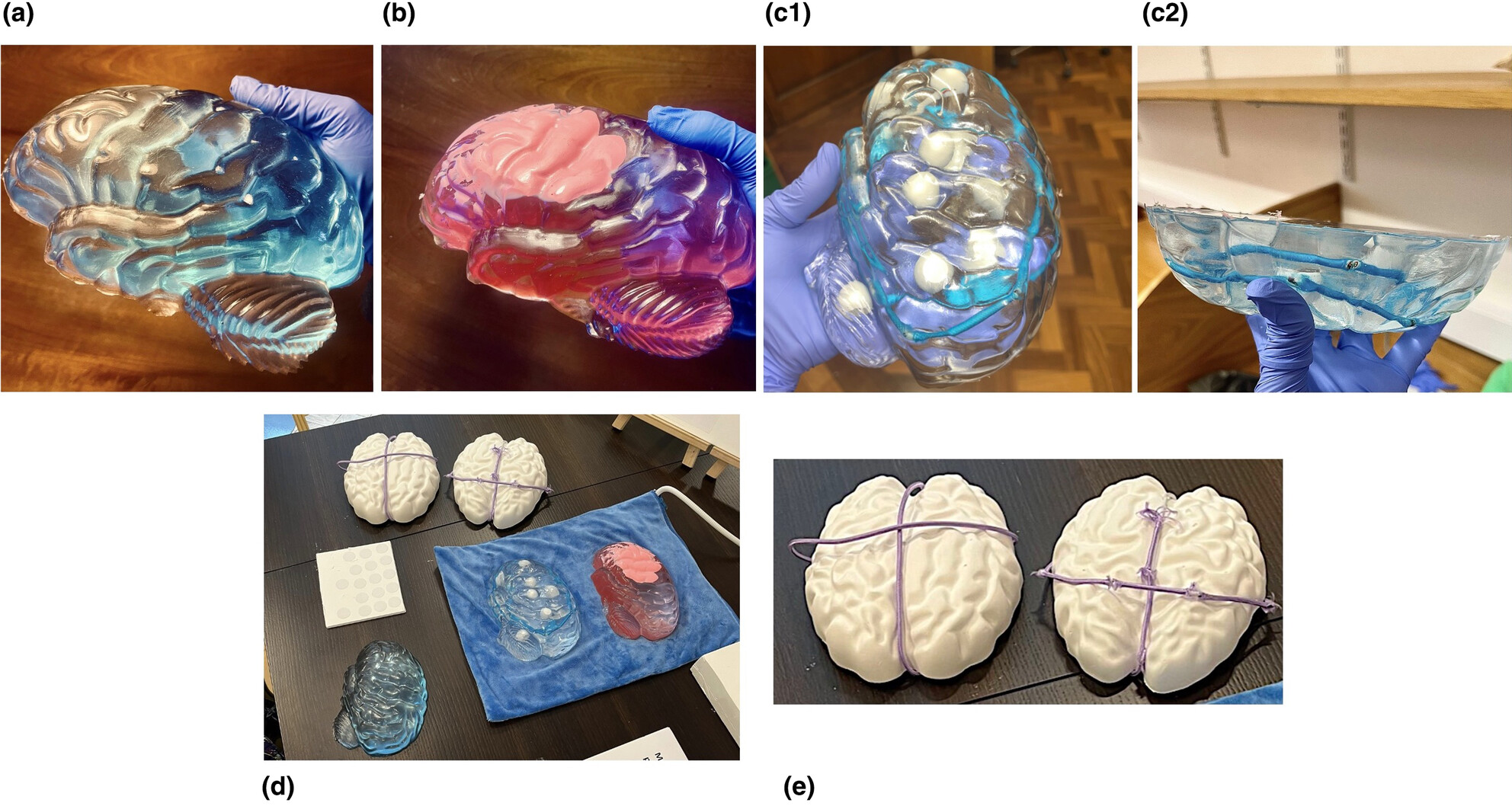
The Sensory Science exhibition, held during March 2024, was a collaborative effort between researchers and artists, aimed to promote the importance of inclusive and diverse scientific engagement for blind and low-vision communities. The exhibition utilized tactile models, interactive experiences and accessible formats to explore the role of the immune system in central nervous system health and disease, focusing on traumatic brain injury and multiple sclerosis. The exhibition gathered significant public attention, amplifying the impact of our initiative and bringing further awareness to the complexities of the immune system.
Art, science and inclusion: multisensory Sciart of immunology for blind, low-vision and diverse-needs audiences
- First Published: 01 May 2024

Art has a longstanding history of communicating scientific discoveries, despite the perceived gap between art and science, as highlighted by CP Snow and others. However, the visual nature of much scientific communication often excludes individuals with blindness or low vision, limiting their participation in STEM discourse. This paper introduces an innovative collaboration between science and art through an exhibition program focused on Immunology and Biomedicine, designed to cater to blind and vision-impaired audiences, emphasizing the power of multisensory art to promote inclusivity at the intersection of science and accessibility.
Access all areas: multisensory science exhibitions tailored toward blind, low-vision and diverse-needs communities
- First Published: 25 February 2024
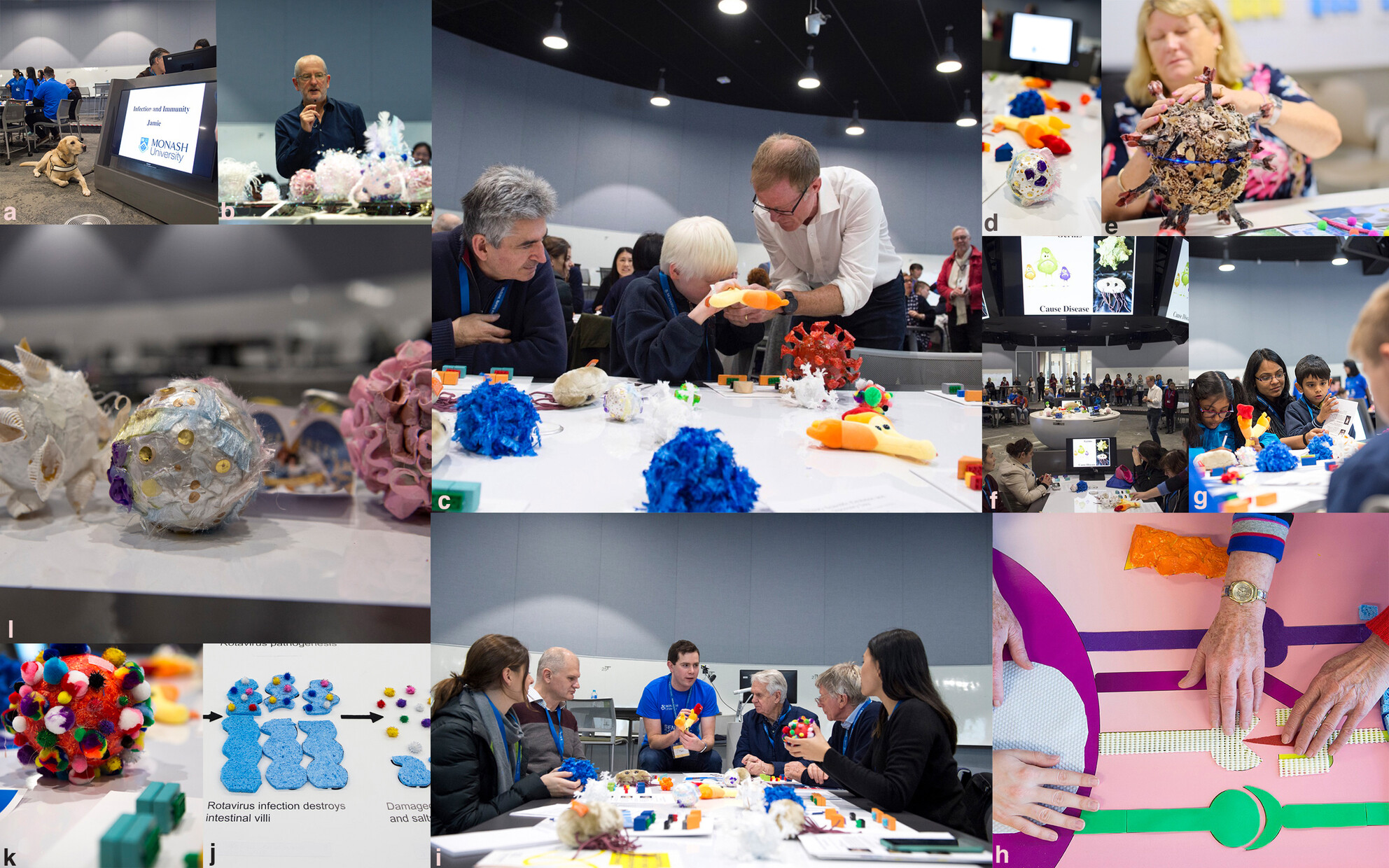
The Monash Sensory Science event held in 2023 was a tailored scientific exhibition for individuals with low vision, blindness and diverse needs. The initiative aims to showcase Australian science and promote increased participation from often overlooked communities, detailing our experiences in launching this project at Monash University and other institutions.
A Touch of Immunology: improving accessibility to the science of antibodies for people with blindness, low vision and diverse needs
- First Published: 31 October 2023
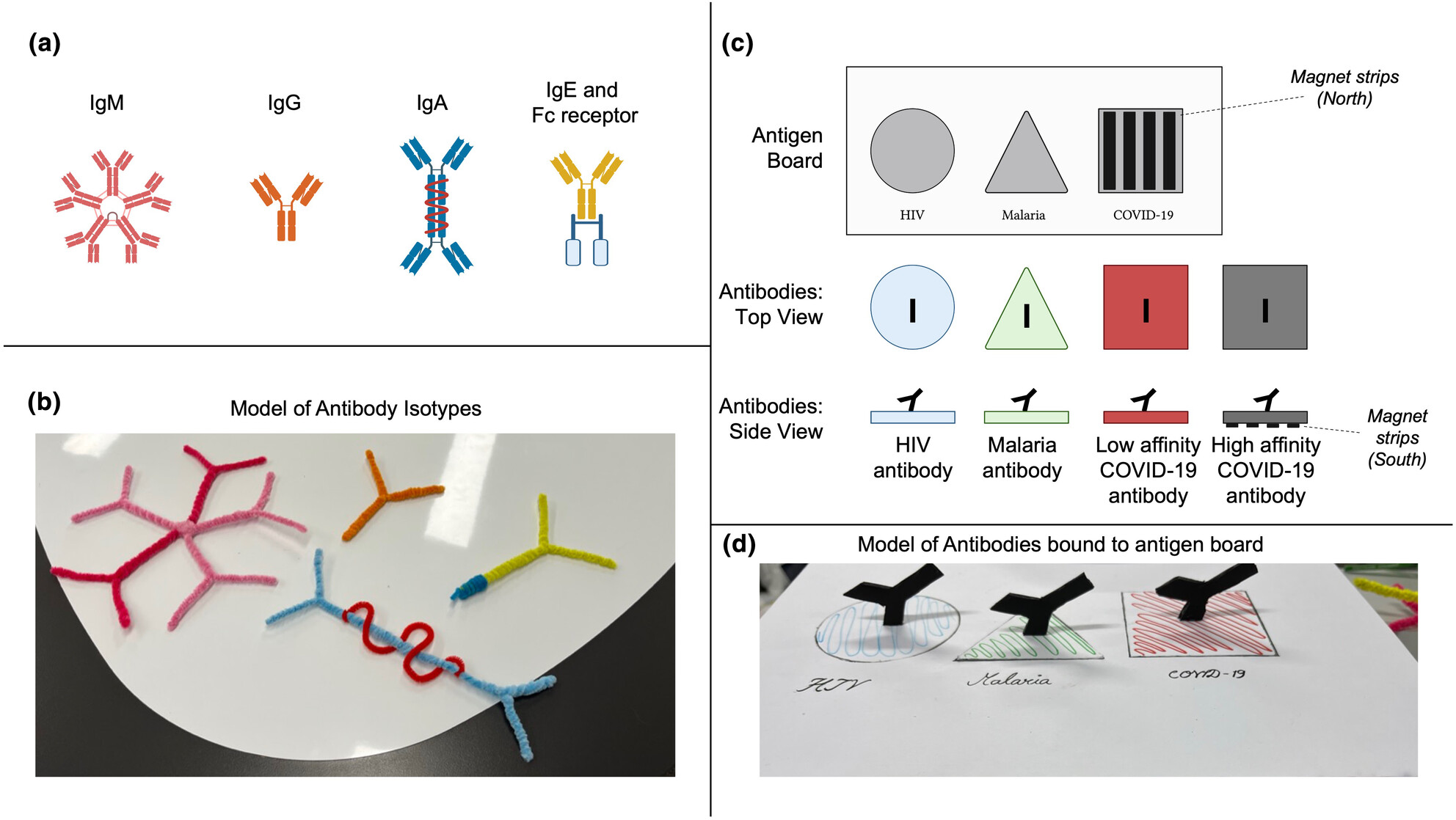
Most scientific communication has historically been limited to visual imagery and the written or spoken word, often in the form of dense articles obscured by jargon. Clear communication of science is vital to enable the public to engage with important scientific discoveries and to limit medical distrust. However, scientific communication is often executed in a way which neglects people with blindness, low vision and diverse needs. Our aim for our workshop exhibit at the Monash Sensory Science Exhibition on Autoimmunity 2023 at Monash University was to develop novel, tactile and informative models to help better communicate the scientific principles that underpin autoimmune disease and immunology.
Bridging science and accessibility: a tactile journey from gluten through to coeliac disease
- First Published: 18 December 2023
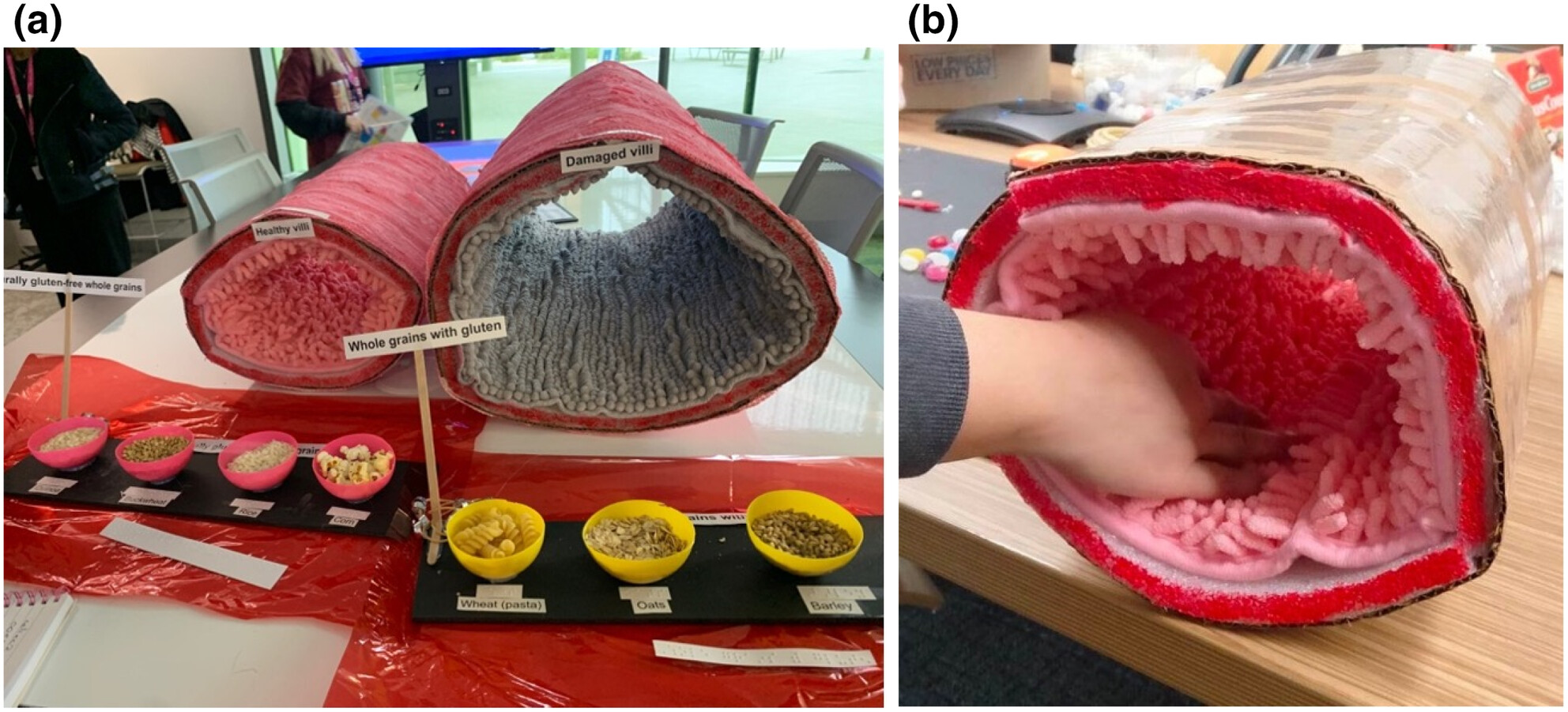
Through tactile and sensory exhibits at the 2023 Monash Sensory Science Exhibition, we showed how benign dietary gluten can be transformed into a harmful entity for the 1 in 70 Australians with this illness. In contrast to the common misconception of coeliac disease as a food allergy, our exhibits revealed its closer association with autoimmune diseases such as type 1 diabetes, involving genetic susceptibility linked to specific human leukocyte antigens, crucial antigen-specific T- and B-cell responses and autoantibody production.
A tactile approach to introduce the skin autoimmune disease psoriasis to the general public and the vision-impaired community
- First Published: 20 November 2023
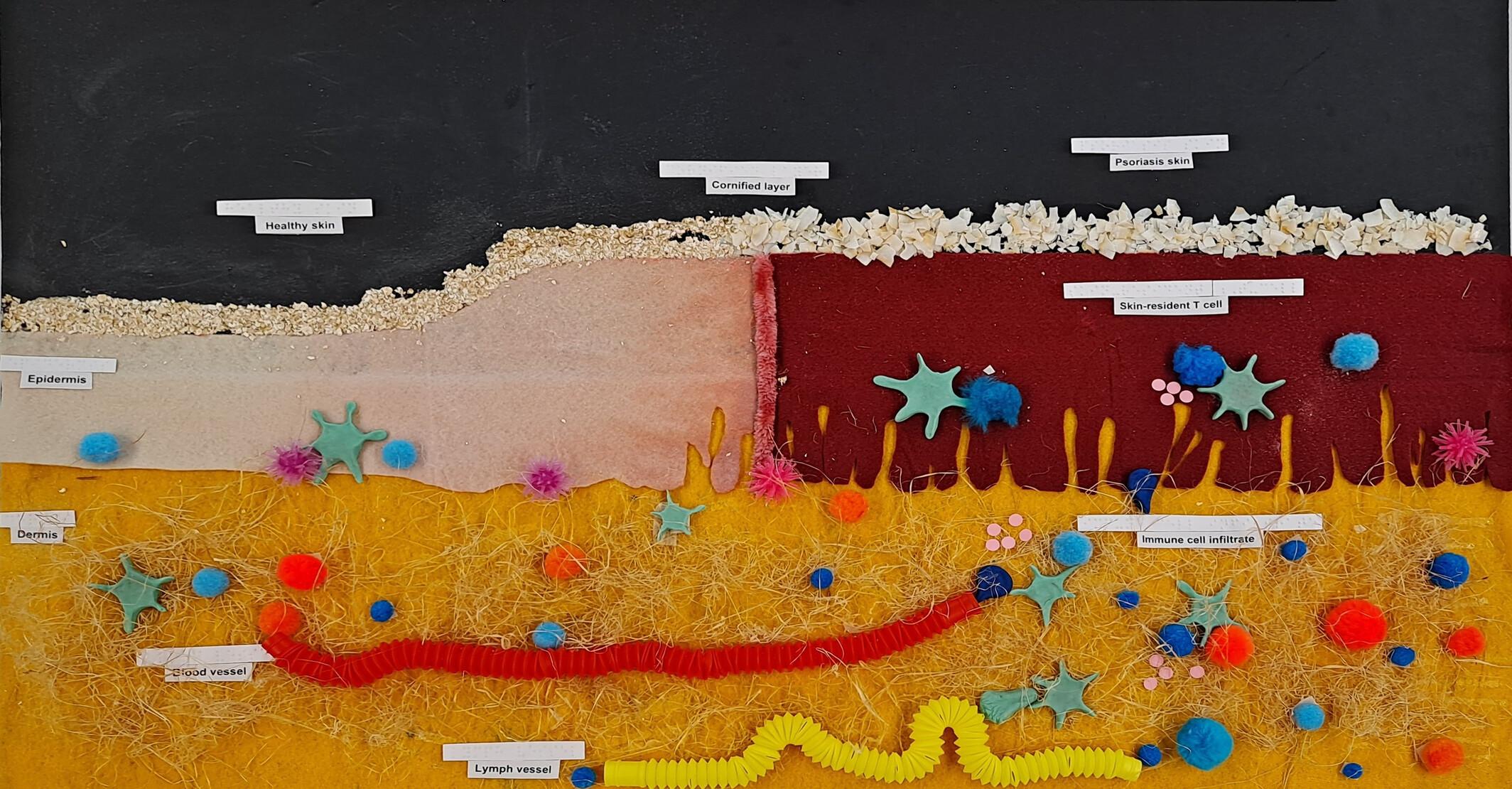
The vision-impaired community is often disadvantaged when the most common audio–visual approach of scientific communication is applied. At the 2023 Monash Sensory Science exhibition, we integrated the inclusion of tactile clues in the scientific communication of immune processes involved in the autoimmune skin disease psoriasis.
Conveying the pathogenesis of type 1 diabetes to the blind, low-vision and diverse needs communities through sensory stimulation
- First Published: 05 March 2024

To educate members of the blind, low-vision and diverse needs communities on the pathogenesis of the chronic autoimmune disease, type 1 diabetes, members of our team with research expertise in immune-mediated diseases, participated in the 2023 Monash Sensory Science (MSS) Exhibition. Using QR code linked audio commentary, participants were guided through tactile displays demonstrating normal insulin action in the regulation of blood glucose levels and its vital role in providing energy to tissues, followed by displays describing the various stages of the immune system's aberrant attack and eventual complete destruction of the insulin producing beta-cells of the pancreatic islets in type 1 diabetes.
It feels like lupus: accessible science for the low-vision community on immune system dysfunction in lupus
- First Published: 18 March 2024
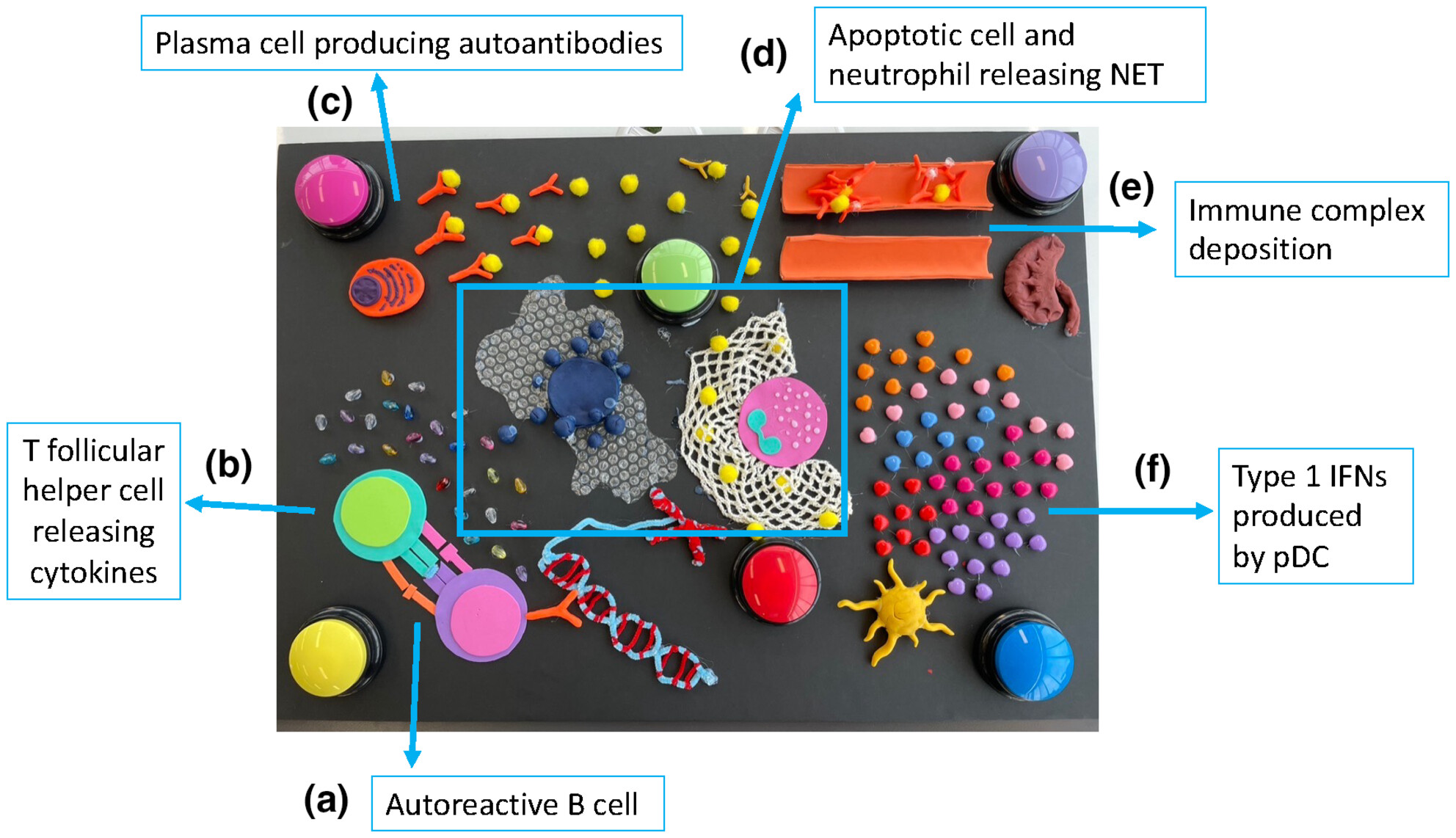
In this article, I describe the tactile models and artworks that our team created to communicate the science underpinning lupus to the low-vision community, displayed at the 2023 Monash Sensory Science Exhibit on Autoimmunity. I discuss the sensory tools that worked well, and what we could change in the future to further improve inclusivity.
Liposomal delivery of self-peptide and calcitriol as tolerogenic immunotherapy in rheumatoid arthritis: an exploration using sensory science
- First Published: 12 January 2024
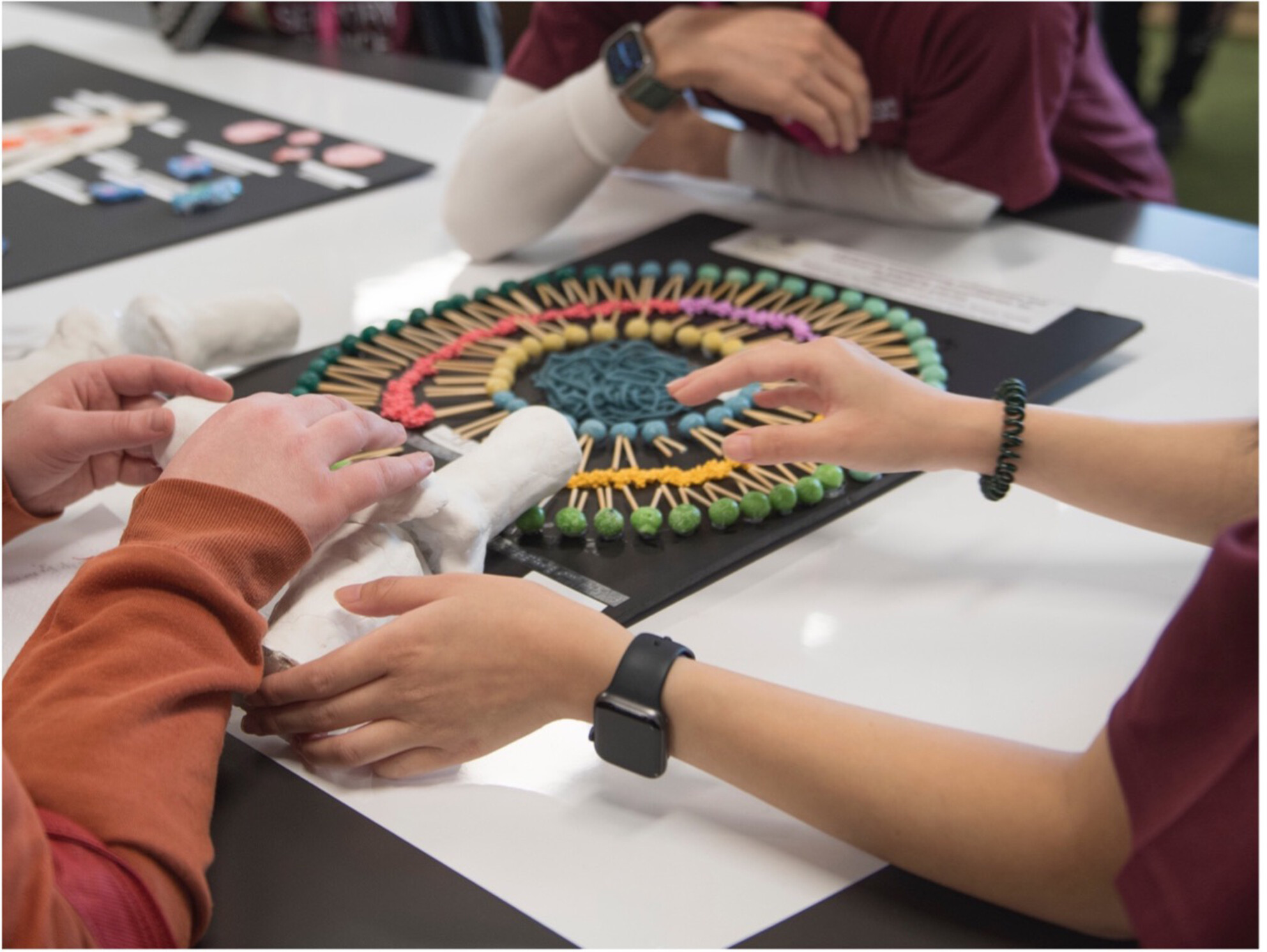
Immunology research holds significant potential for enhanced inclusivity, but persistent challenges stem from limited awareness that improvement is needed in this field. At the 2023 Monash Sensory Science Exhibition, we presented tactile posters, using simple materials, for visually impaired participants to showcase our research on the pathogenesis and immunotherapy of rheumatoid arthritis.
Inclusive multisensory science and immunology books for blind, low-vision and diverse-needs audiences
- First Published: 03 May 2024
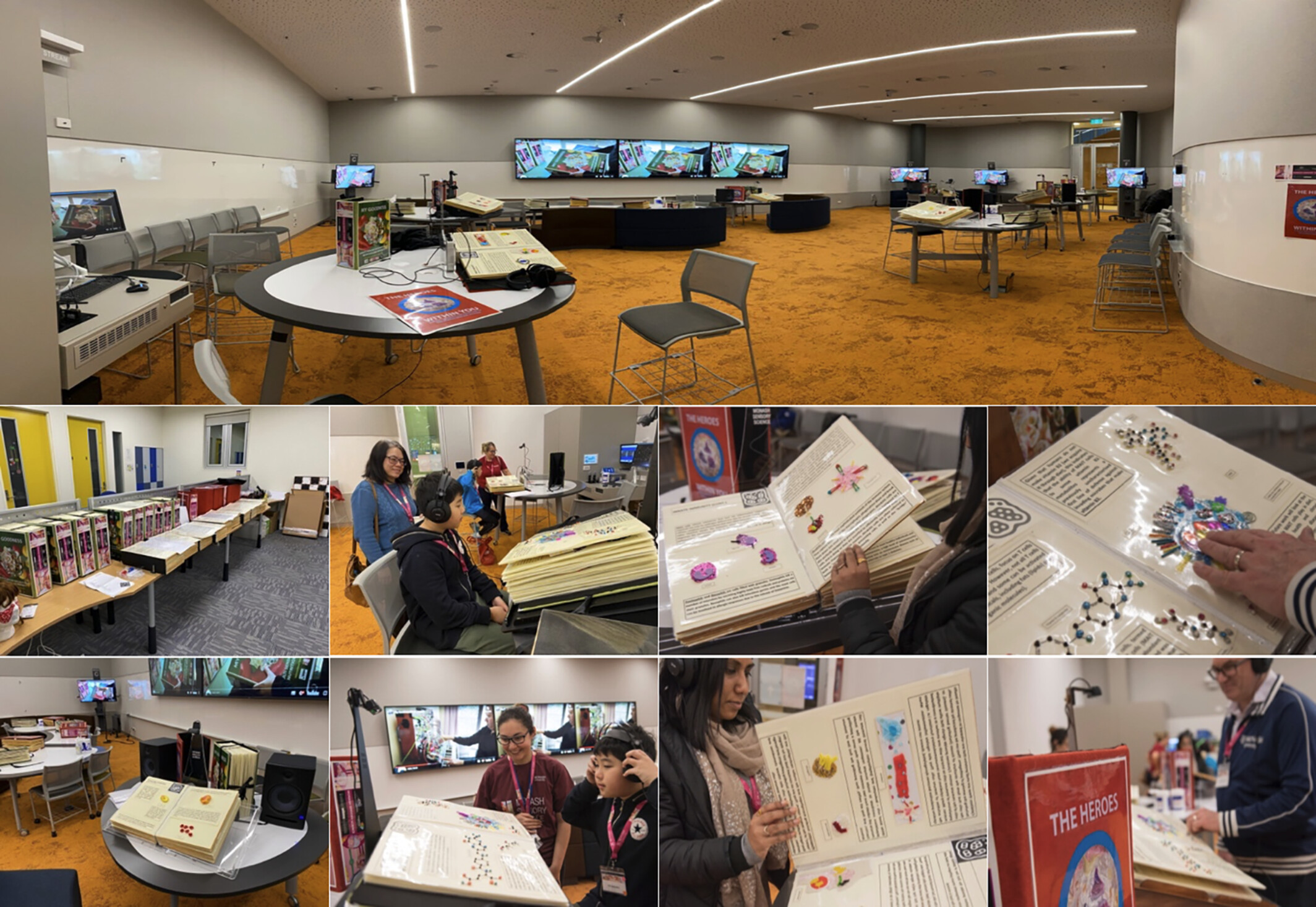
This paper presents interdisciplinary research including practice-based art making and interaction design exploring the development of inclusive multisensory science books communicating immunology data for blind and low-vision audiences. The research project involved artists, designers and scientists in a cocreation process, resulting in books that incorporate tactile artworks, Braille-inspired protein models, image sonification and interactive elements. These books were exhibited at the Monash Sensory Science 2023 Exhibition Workshop. This research highlights the potential for an interdisciplinary and inclusive approach to science and art communication, demonstrating the potential of multisensory books as valuable tools for education and science communication.




